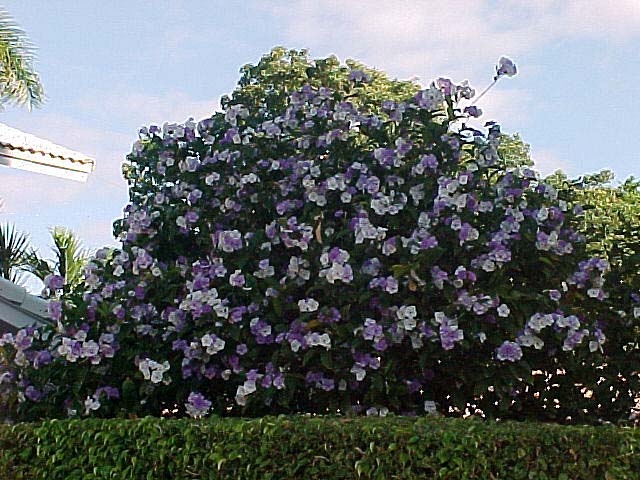OPAL Score:2
Yesterday, Today and Tomorrow Toxicity (YTT)/ Brunfelsia
With the popularity of lifestyle shows featuring garden make-overs, we have begun to see a new type of poisoning case in 2005. The symptoms of this plant can mimic anything from snail bait to strychnine poisoning.
Whereas fewer and fewer cases of snail bait and slug toxicity are seen due to better owner diligence in how and where the chemicals are applied, more and more vets in the Wollongong and Shellharbour area are being presented with pets poisoned by a newish plant in the popularity stakes called “Yesterday, Today and Tomorrow”.
The plant is known by its Latin name “Brunfelsia australis or grandiflora” and grows as a shrub or small tree. The principle toxin is Brunsfelsamidine, a neurotoxin that causes seizures. The toxin is contained in all parts of the plants but the leaves and flower heads appearing particularly palatable and often eaten in vast quantities. The plant is also often called the “Chills” plant because of its hallucinogenic effect in humans who exhibit shivering and shaking as if extremely cold and chilled.
Symptoms
In the initial stages, or with small amounts ingested, the dogs cough and gag, drool copious amounts of saliva, may or may not have rolling of the eyeballs and have a wide eyed, spaced-out look with mild to moderate agitation and anxiety.
If enough toxin is ingested, seizures similar to strychnine poisoning can occur and may prove fatal. The number of cases peak between May and September with some vet clinics seeing up to 3 cases in a given week.
Similar toxicities
Cases can be mistaken for snail bait, toad fish poisoning, spider bites, macadamia nut overdose, strychnine etc so it is important to have the owner check any garden the dog may have visited in the last few days for this plant and assess how much of the plant has been ingested.
Prevention
The plant should be dug up immediately and put in the bin as we have had cases where the dog returned home to access the plant in the compost bin.
Treatment- Veterinary Surgeons will administer appropriative supportive therapy for the duration and extent of the seizures and distress.
Dr Aine Seavers is the author of this article which was first published in 2005 in the Control & Therapy CVE University of Sydney. The article is/can be used by other vet clinics on their own sites as long as the authorship and journal source acknowledged. Please ensure that if re-typed by a third party, that a spell checker is run on the document before it is hosted as I do not wish to have emails about spelling mistakes and typos that are not of my doing.
In 2017-we have posted an updated version of this article dealing with additional issues with this plant. The new article on Brunfelsia/YTT is also available on this website

